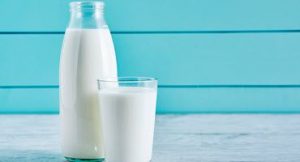
You may believe it’s butter, but you may not believe the price.
Butter prices are at an all-time high: One pound of butter cost $4.70 on average in August, compared to $3.63 a year ago, according to the U.S. Bureau of Labor Statistics. And the reasons for the price spike are complicated.
Grocery prices rose 13.5% in August on the year, and the price of food rose 11.4%. Both were the highest since 1979. But butter showed one of the biggest jumps in price: In August, butter was 24.6% more expensive year over year.
There were 282.6 million pounds of butter in cold storage in August, down from 362.7 million pounds in August 2021. The amount of butter held in cold storage this August was also the lowest it had been in the past five Augusts.
What’s behind the spike? Higher production costs and extreme heat have hurt milk supply, said Tanner Ehmke, lead economist for dairy and specialty crops at CoBank, a national cooperative bank serving industries across rural America.
The reasons are less complicated for the cows. In extreme heat, cows eat less — and produce less milk, Ehmke said. As a result, farmers across the country have reported that milk production fell as the temperature soared.
Cattle experience heat stress in hot weather, with dairy cows being particularly sensitive to high temperatures. Scientists estimate that the dairy sector shoulders more than half of the costs of heat stress among the livestock industry.
Usually, when dairy prices are high, farmers will quickly expand their herd, but this year replacing a cow became very expensive, Peter Vitaliano, chief economist at the National Milk Producers Federation (NMPF), told MarketWatch.
Smaller cow herds
So why haven’t farmers increased their herds? The cost of maintaining dairy production has skyrocketed due to supply-chain disruptions; labor shortages; and the rise in the cost of cow feed, including grain, corn silage, and soybeans.
Global disruptions such as the pandemic and Russia’s war in Ukraine sent feed prices soaring. The price of a bushel of corn was $7.26 in May, compared to $5.91 at the same time a year earlier, according to the U.S. Department of Agriculture.
“Record-high feed costs, labor costs, transportation costs, everything that it costs to milk a cow, went up,” CoBank’s Ehmke said. As a result, it was harder for farmers to maintain or increase the size of their cow herds, he added.
The U.S. dairy-cow herd size fell to 9,416,000 in July, and had shrunk by more than 60,000 cows from the year before, according to USDA data. Last year, the U.S. dairy herd hit a 27-year high.
“I think we’re reaching the peak of butter prices,” Vitaliano said. Dairy production is catching up with demand, he said, “but we’re still looking at an environment where milk production is still not robustly expandable.”
Competing for cream
While milk production was lower than in previous years, a greater chunk of cream is going to cheese production, as more consumers develop a taste for it both domestically and internationally, Ehmke said.
U.S. cheese consumption per capita is growing around 1% to 2% each year, according to the USDA. Cheese exports from the U.S. also increased, particularly in economies such as South Korea and Japan.
The last of the milk is traditionally used for butter. “When all those other uses have been taken care of, then what’s left goes to produce butter and nonfat dry milk powder,” Vitaliano said.
The record butter prices could potentially push more consumers to cheaper in-store brands or butter alternatives, such as margarine or vegetable oils, Ehmke wrote in a report in June.
The price of margarine rose by 38% year over year, the second highest price increase in the CPI monthly report following eggs. A pound of margarine still costs less than butter — $2.28 to $3.98, depending on the brand.
“Basically, dairy product prices are not going to go back to average levels until feed costs and all these other costs of producing milk — particularly expanding milk production — go down,” Vitaliano said.























